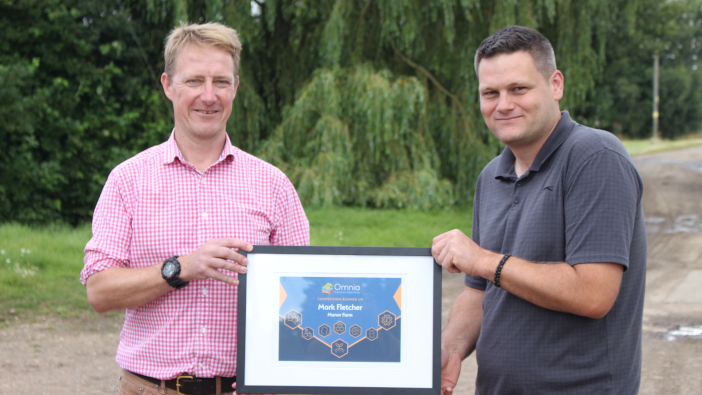Earlier in the year, Norfolk arable farm Mark Fletcher won a free version of the web-based Omnia system from Hutchinsons. Working closely with family in a second-generation partnership, as well as contracting and working in tandem with a neighbouring farm, he plans to use the system on the Home Farm first.
“We have made a start with the new platform, uploading crops and boundaries, and so far, it seems a straightforward, intuitive system,” said Mr Fletcher.
With soils ranging from light sandy loams to clay outcrops, often varying in the same field, as well as stony and abrasive conditions, he plans to use Omnia to generate plans to optimise the plants per square metre, using variable rate. Typical crops include winter wheat, winter and spring malting barley, oilseed rape and sugar beet. Last year, he also grew rye for the first time.
“One of the challenges we have is that our soils are generally low in nutrients, so tailoring inputs and seed rates will help crops reach their full potential,” he said.
Mr Fletcher added that he expects the environmental audit function to be very useful as he is in the first of the Countryside Stewardship scheme.
“One of the benefits of the system is the collection of background data which will help us assess whether we are improving our environmental sustainability,” he said.
Monitoring the environmental footprint
There are a number of ways Omnia can help growers monitor their environmental footprint and leave an audit trail, said Edmund Stevens, an agronomist at Hutchinsons. For example, the Omnia mapping clearly shows field margins and where features are in the field, and there is the option of an auto-fill tool if the user wants to create a bespoke margin.
Mr Stevens added: “When drilling strips or mowing them, and you can take a picture on the Scout app which shows the date, location and time. This helps create an audit trail to show what you have done and how you are fulfilling the requirements of any particular scheme.”
He said that to comply with the Sustainable Soil Incentive (SSI) growers can already carry out a soil management plan, adding that the system will be further developed to make it easy to use for ELMS schemes, so it is possible to easily quantify each option.


